Best hedge trimmer
The best hedge trimmer helps you snip and shave your shrubbery to perfection.
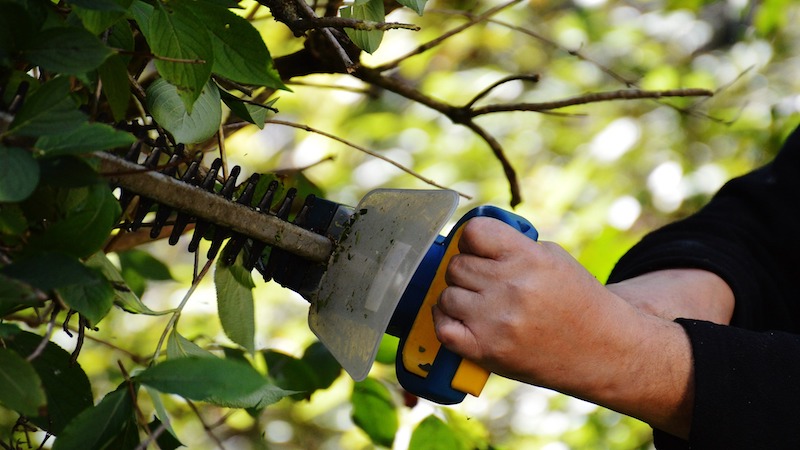
Keeping up with yard work can be a tiring task. Using the right tools for the job cuts down on physical labor and gives your yard a professional look. Today's best hedge trimmers are power garden tools that make easy work of pruning bushes, hedges, and even small trees.
Hedge trimmers are not a one-size-fits-all yard device. They come in a variety of sizes meant to meet your specific needs. Some hedge trimmers look like a giant pair of scissors and operate manually, allowing you to get at hard-to-reach branches. Some are battery-powered, giving you the freedom to move about your yard without being tethered to a power cord. And others are electric and ideal for trimming hedges in a central location.
Whatever your needs, we have suggestions. Whether you're pruning back a large, unkempt hedge or need to tidy up with a few simple snips, these are the best hedge trimmers your money can buy.
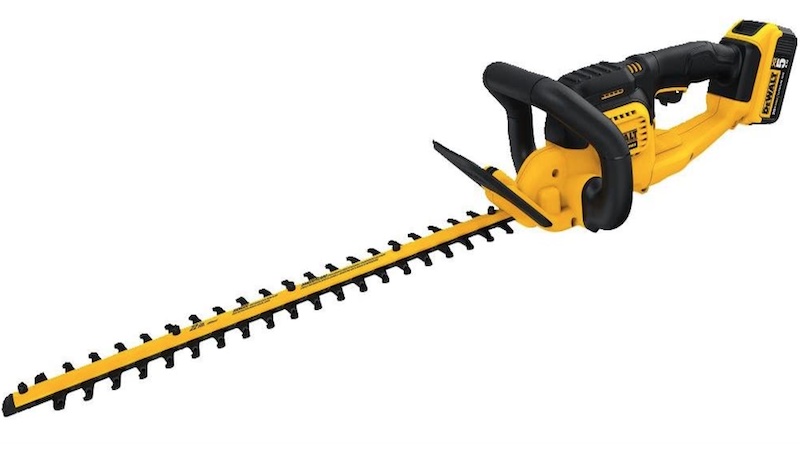
DEWALT 20V MAX hedge trimmer
The best choice for most jobs
This battery-powered, 22-inch hedge trimmer makes cutting back hedges, up to .75 inches thick, a breeze.
Pros:
- High-capacity lithium-ion battery
- Cuts up to 0.75-inch thick branches
- 22-inch cutting blade
- Batteries are interchangeable with other Dewalt tools
- Lightweight
Cons:
- No blade protector sleeve included
If you've already invested in the DEWALT ecosystem, the DEWALT 20V Max is a no-brainer. And if you're not, why not start with this hedge trimmer? With DEWALT, batteries are interchangeable, so you can use your hedge trimmer battery with other tools in your garage. This lightweight hedge trimmer has a 22-inch blade, can handle cutting anything up to 0.75 inches, making it effortless to shear big and small bushes and hedges on your property. The cordless design goes anywhere and will make even your biggest jobs less of a chore.
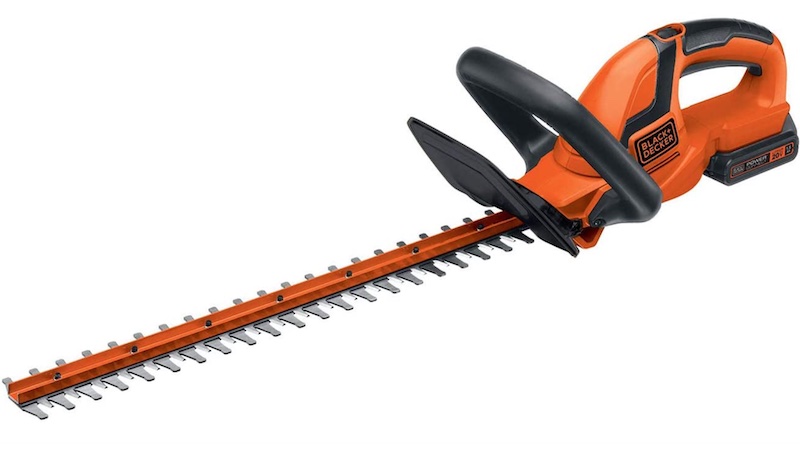
BLACK+DECKER 20V MAX cordless hedge trimmer with extra battery
When you need a little more oomph
Slice through hedges and branches all day with this 22-inch hedge trimmer that never runs out of steam, thanks to the included extra battery.
Pros:
- Comes with an extra battery
- Cordless
- 22-inch blade
- Cuts up to 3,000 square feet per battery charge
- Lightweight
Cons:
- No trigger lock
When you have mature branches and an abundance of hedge work to do, you'll want the BLACK+DECKER 20V MAX cordless hedge trimmer in your toolkit. This model has a 22-inch blade, comes with an extra rechargeable lithium-ion battery, and is capable of cutting back up to 3,000 square feet of branches and shrubs before you need to switch the battery out. Bonus: With the inclusion of an extra battery, this is one of the best options around.
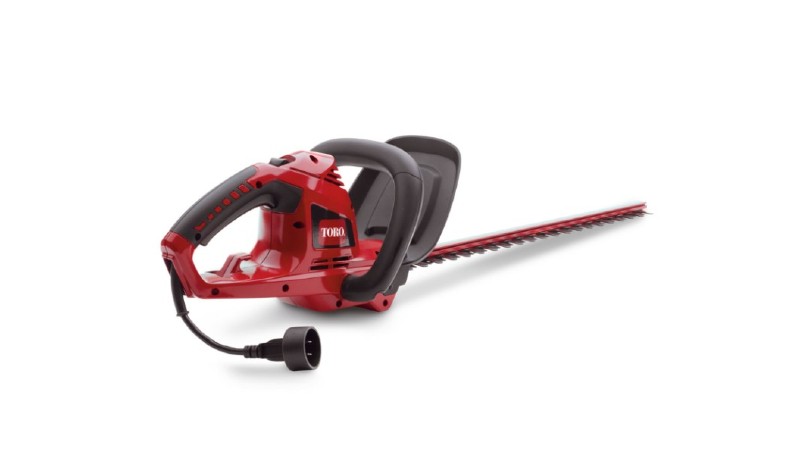
Toro 51490 corded hedge trimmer
A powerful 4-amp motor
This corded hedge trimmer has a reliable 4-amp motor and a 22-inch cutting bar. And you never have to stop to recharge since it's always powered.
Pros:
- Powerful
- 22-inch cutting bar
- Dual-action cutting system reduces vibration
- Cuts through big and small branches
Cons:
- Not cordless
There are advantages to choosing a corded hedge trimmer, and that's namely in the power department. The 4-amp motor on the Toro 51490 slices through large and small branches and quickly cuts back greenery. The generous 22-inch cutting bar gives you enough reach to avoid pulling a ladder out of the garage, too. The ergonomic handle is comfortable to use, and we love the dual-action cutting system that reduces vibration and hand fatigue.
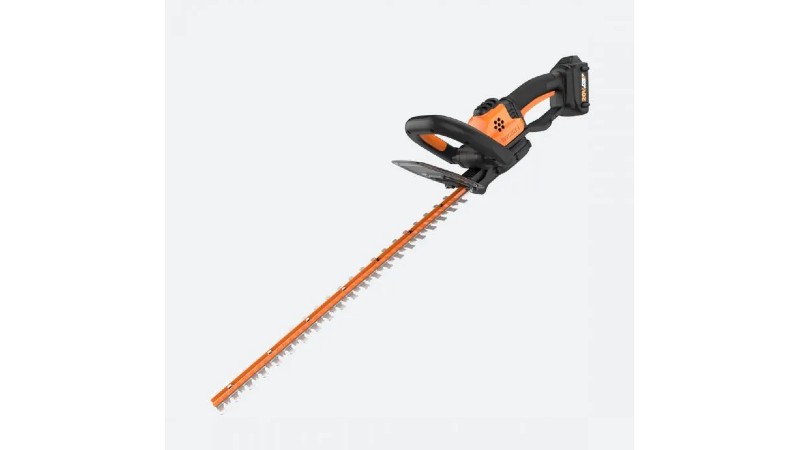
WORX WG261 20V Power Share cordless hedge trimmer
The lightest model on the block
This hedge trimmer weighs just 5.5 pounds, so it's effortless to lift high or low. It's also designed to absorb vibration.
Pros:
- Weighs only 5.5 pounds
- Smooth cut
- 22-inch blade
- Comfortable two-handed grip
- Affordable
Cons:
- Best for small jobs
Trimming hedges is usually heavy, endless work. The WORX WG261 weighs in at only 5.5 pounds, so it's easier to maneuver in and around greenery, bushes, shrubs, and small branches. This lightweight hedge trimmer comes with a 20V rechargeable battery, has sharp blades out of the box, and enhanced safety features. All these features make it one of our favorite hedge trimmers of the year.
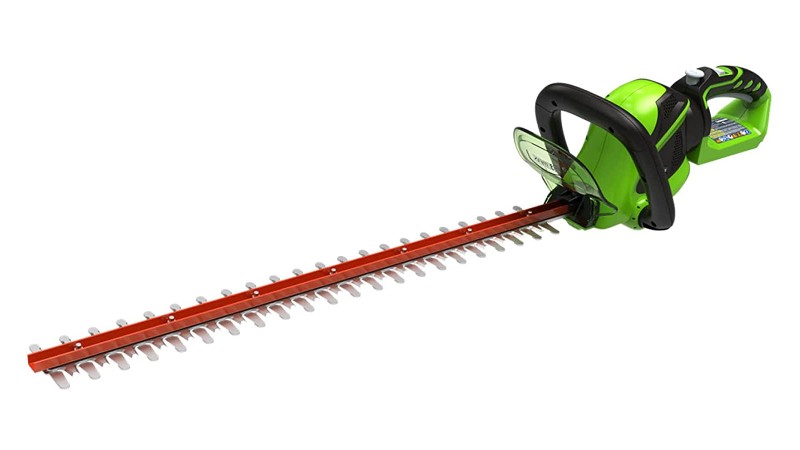
Greenworks 40V 24-inch cordless hedge trimmer
A rotating handle makes all the difference
With a 24-inch blade for extra reach and a rotating handle, Greenworks makes trimming easy as can be.
Pros:
- 24-inch blade
- Rotating handle
- Excellent with thick branches
- Inexpensive
- Comfortable handle
Cons:
- Battery and charger not included
For serious yard work, the Greenworks cordless hedge trimmer is a workhorse. The extra-long 24-inch cutting bar, equipped with dual-action steel blades, gives an exact trim to delicate green leaves and cuts through tough, old branches with ease. This innovative hedge trimmer has a 180-degree rotating rear handle so you can reach shrubs and hedges from multiple angles.
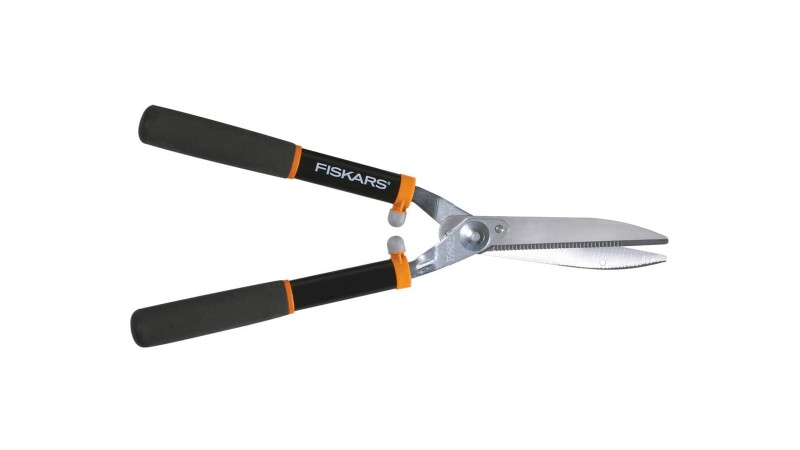
Fiskars Power Lever 8-inch shears
The tool professional rely on for precision
These scissors-like hedge trimmers are perfect for fine work and shaping.
Pros:
- Shock-absorbing bumpers
- Excellent for shaping hedges
- Sharp, steel ground blades
- Non-slip grip
- Lightweight
Cons:
- Not for big jobs
The Fiskars Power Lever is a perfectly-balanced manual tool for shaping bushes and hedges and cutting back old branches and greens. The shock-absorbing handles are comfortable and prevent hand and arm fatigue. When you need better control and absolute precision on smaller hedges, ivy, and bushes, the Fiskars Power Lever is the best hedge trimmer on the block.
Cut yard work time with the best hedge trimmer
All of these hedge trimmers are capable of paring away delicate greenery and slicing through unwanted branches. Our staff pick from DEWALT is a cordless yard tool that gives a 22-inch laser-like cut and has plenty of power for every type of shrub, bush, and hedge.
When you're dealing with tall or hard-to-reach hedges, we love the Greenworks cordless hedge trimmer. It's a lightweight model with a rotating handle and a 24-inch cutting bar that can even out hedges and deal with thick branches.
When you need a tool that can clip back unruly hedges and shape them, reach for the Fiskars Power Lever. They're a large pair of shears that give you ultraprecise reach and control.
Why trust us?
At GardeningEtc, we recommend the best products to enhance your life. As expert curators, we handpick products based on quality and usefulness to positively impact your day-to-day, from cart to doorstep. We take our responsibility seriously — testing products, reading reviews, and sourcing knowledgeable outlets to ensure our selections are worthy of your time and money. We deliver detailed product overviews, balancing objective information with subjective opinions, so making the best choice for your home and lifestyle is as easy as possible.
Why trust me?
I don't have much of a green thumb, but I do love my power tools. I own and use several hedge trimming devices, including our staff pick.
Jodi Owan works behind a keyboard and camera. With over 20 years of experience writing for print magazines and popular websites online, she writes reviews, buyer guides, and outdoor adventure. When home, she kicks up her feet in the Midwest with two dogs and can often be found hiking or climbing or with her head in a book.
